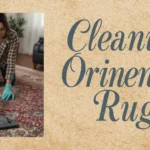Dry cleaning is often associated with professional services. But with the right methods, you can achieve the same results without leaving your home. Dry cleaning at home not only saves money but also gives you control over the process and products used. From delicate fabrics to stubborn stains, the right approach ensures your clothes look fresh, clean, and damage-free.

Content
Why Choose Dry Cleaning at Home
Dry cleaning at home offers convenience, cost savings, and flexibility. You can clean your garments whenever you want without waiting for pickup or delivery. This method also allows you to select gentle cleaning agents that are safer for your fabrics and health.
Cost-Effective and Time-Saving
Professional dry cleaning can be expensive, especially for frequent use. Doing it at home can cut costs by up to 70% while eliminating the need for multiple trips to a dry cleaner.
Gentle on Fabrics
By selecting the right cleaning products and methods, you can protect delicate fabrics like silk, wool, and cashmere from harsh chemicals.
Understanding How Dry Cleaning Works
Traditional dry cleaning uses chemical solvents instead of water to clean clothes. The most common solvent used by professionals is perchloroethylene (perc), but it can be harsh and harmful. At home, you can use eco-friendly alternatives and mild solutions to achieve similar results.
Key Components of At-Home Dry Cleaning
- Dry Cleaning Kits – Available at most stores, they contain cleaning sheets and reusable dryer bags.
- Spot Cleaning Solutions – Useful for removing specific stains before the main cleaning process.
- Fabric Brushes – Help remove dust, lint, and surface dirt before treatment.
Step-by-Step Guide to Dry Cleaning at Home
Step 1: Read the Care Label
Always check the garment’s care label to confirm whether it’s suitable for dry cleaning at home. Some fabrics may require professional care only.
Step 2: Pre-Treat Stains
Use a gentle stain remover or a mixture of mild detergent and water to dab (not rub) the affected area. This step prevents stains from setting.
Step 3: Use a Home Dry Cleaning Kit
Place your clothes in the provided dryer bag along with the cleaning sheet. The heat from the dryer activates the sheet’s cleaning agents, which refresh and clean the garment.
Step 4: Air Out the Clothes
Once the cycle is complete, hang your clothes immediately to prevent wrinkles and allow them to breathe.
Best Fabrics for Dry Cleaning at Home
Some fabrics respond better to home cleaning and at-home dry-cleaning methods than others.
Suitable: Wool, cashmere, silk, rayon, and polyester blends.
Avoid: Suede, leather, and heavily embellished garments, as they need specialized professional care.
Common Mistakes to Avoid
Using Too Much Heat
High dryer temperatures can shrink or damage fabrics. Always use a medium or low heat setting.
Skipping Stain Treatment
Dry cleaning at home is not as effective at removing deep stains if they’re not pre-treated.
Overloading the Dryer Bag
Placing too many clothes inside reduces the cleaning sheet’s effectiveness and can cause wrinkles.
Eco-Friendly Dry Cleaning at Home

Many home dry cleaning kits are made with biodegradable cleaning agents. You can also make a DIY solution using vodka and distilled water to deodorize fabrics without chemicals. This is especially useful for wool coats and blazers.
When to Still Use Professional Dry Cleaning
While home methods work for most garments, some situations still require professional care:
- Items with oil-based stains.
- Delicate vintage garments.
- Fabrics labeled “Dry Clean Only” with no exceptions.
Maintenance Tips for Longer-Lasting Clothes
Rotate Your Wardrobe
Avoid wearing the same delicate garments repeatedly to reduce cleaning frequency.
Store Properly
Use breathable garment bags and padded hangers to prevent dust and shape loss.
Steam Instead of Washing
For in-between freshening, use a garment steamer to remove odors and wrinkles.
Conclusion:
From my experience, dry cleaning at home can produce professional-quality results when done correctly. I have tested both store-bought kits and DIY solutions, and both work well for most fabrics when combined with proper stain treatment and care. With a little preparation, the right tools, and gentle techniques, you can enjoy fresh, clean clothes without leaving your home. Not only is it more affordable, but it’s also an eco-friendly and time-saving alternative.
FAQs About dry cleaning at home:
How to professionally dry clean at home?
Use a home dry-cleaning kit or gentle garment steamer, follow care labels, and spot-clean stains before refreshing clothes in a dryer with a cleaning cloth.
How does dry cleaning work at home?
Home dry cleaning uses special cleaning sheets and low heat in the dryer to loosen dirt, remove odors, and freshen clothes without full water immersion.
What are the 5 steps in dry cleaning?
Inspect garments, pre-treat stains, clean with solvent or kit, dry and refresh, then press or steam for a crisp finish.
What to know before dry cleaning?
Check fabric care labels, test for colorfastness, and avoid overloading the machine or dryer to prevent damage to delicate fabrics.

I’m Steve Hembree. I love to share my tips and tricks for home improvement, as well as provide ideas for how you can transform your space with DIY projects.













